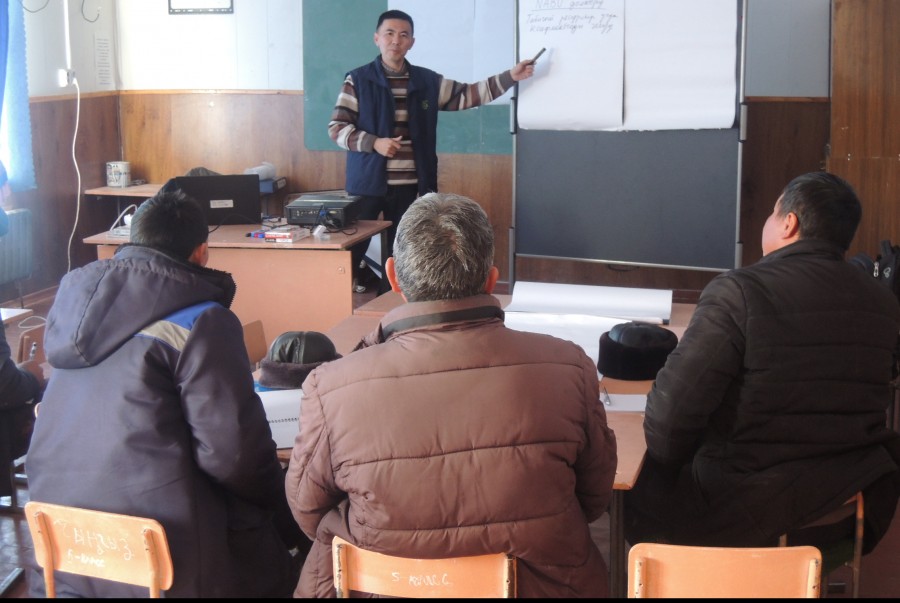
As part of the project's operational plan, interviews were conducted with local resource users. Suggestions voiced by residents during the survey were included in a package of recommendations aimed at resolving conflicts between yak herders and shepherds and developing a pasture management plan.
The goal is to preserve the biological diversity of mountain pastures in the Kara-Kuzhur and Solton-Sary valleys located in the Naryn and Kochkor districts of the Naryn region. The largest number of yaks is concentrated in these areas.
Building the capacity of pasture users in conflict management leads to an understanding of the causes of disagreements and their mitigation. Therefore, three workshops on this topic organised for local communities in the ayil aimags of Min-Bulak, On-Archa and Kara-Kuzhur had a positive impact on people and raised their awareness on resource conflict management.
A pasture management plan was also developed at the Ters-Suu River basin level with wildlife conservation in mind.
The following work was done to develop the pasture management plan:
The collected data was included in the pasture management plan at the Ters-Suu basin level, taking into account wildlife conservation.
In autumn 2020, CAMP Alatoo PF specialists assessed the economic efficiency of livestock production and attitudes towards wildlife conservation among the population of the project area. Thirty-five respondents from the local population, pasture committees and local authorities were interviewed. During the interviews, they were asked to answer more than 25 questions about the state of pastures, causes of land degradation, livestock regulation, wildlife protection measures, etc.
According to the results of the survey, more than 90% of the respondents said that the number of livestock in local households increases every year. This trend was attributed by 37% of respondents to personal needs and another 37% indicated that the increase in livestock is for income generation purposes. About 50% of respondents identified overgrazing as the main reason for the degradation of local pastures and 43% said that pastures are deteriorating. Only 2% of users expressed confidence that the condition of pastures is improving each year because livestock are sold and slaughtered quickly and the number of animals does not negatively affect the land.